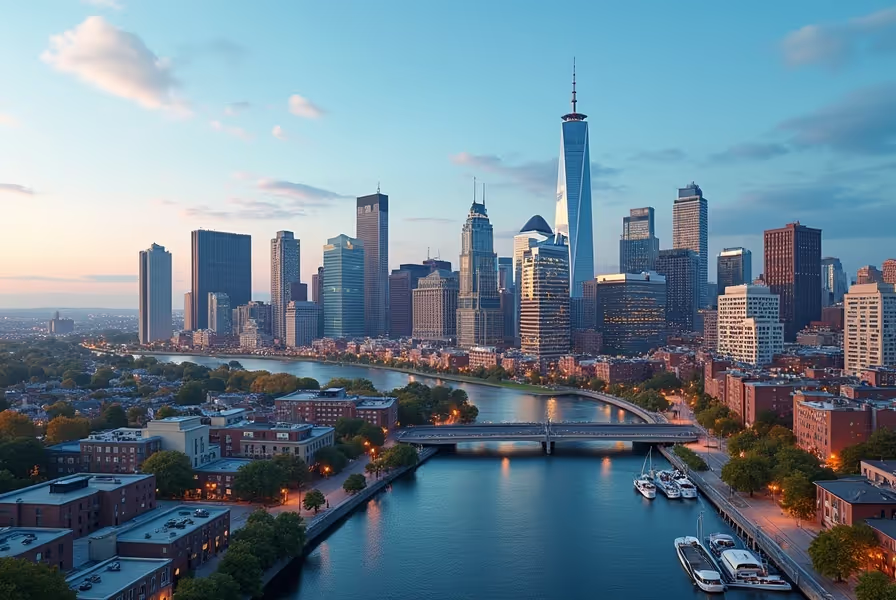Discovering New Jersey’s Largest City: Urban Culture, Demographics & Landmarks
If you’re exploring population statistics or planning a visit to the Garden State, one question might come to mind: What is the largest city in New Jersey? That title goes to Newark, a vibrant urban hub known for its cultural diversity, strategic location, and historical significance. Newark is not only the biggest city by population but also a major player in New Jersey’s economy and development.
Where Is Newark Located in New Jersey?
Newark is situated in northeastern New Jersey, just 8 miles west of Manhattan, New York City. It serves as the county seat of Essex County and lies along the Passaic River. Its proximity to major highways, transit systems, and airports has made it a central hub for travel and commerce in the state.
Key location highlights include:
- Minutes away from New York City by train or car
- Home to Newark Liberty International Airport (EWR)
- Access to major highways including I-95, I-280, and Route 21
- Served by NJ Transit, Amtrak, and PATH trains
How Big Is Newark? Population and Demographics
As of the 2020 U.S. Census, Newark has a population of approximately 311,549 people, making it the largest city in New Jersey by population. It’s followed by Jersey City, but Newark remains the top city in terms of total residents.
The demographic makeup of the city is a key part of its identity:
- Black or African American: Around 50%
- Hispanic or Latino: Approximately 37%
- White (non-Hispanic): Roughly 10%
- Asian: Close to 2.5%
Newark is one of the most culturally diverse cities in the state. Many languages are spoken, and the city celebrates traditions from Latin America, Africa, Portugal, and the Caribbean.
Economic Highlights: Employment & Industry in Newark
As a central economic engine for New Jersey, Newark is home to various industries and major companies. Whether you live in Newark or work nearby, the city's economy offers vast professional opportunities.
Top employment sectors in Newark include:
- Transportation and logistics (close to Port Newark)
- Healthcare and pharmaceuticals
- Education and public administration
- Finance and insurance (home to Prudential Financial headquarters)
- Legal and business services
Also worth noting: The city’s growing tech and innovation scene has attracted startups and entrepreneurs seeking a more affordable location near New York City.
Cultural Attractions and Historical Sites in Newark
Newark offers a rich selection of museums, entertainment venues, and parks. You can enjoy everything from jazz and theater to contemporary art and fine dining.
Some popular attractions include:
- NJPAC (New Jersey Performing Arts Center) – A top venue for live music and performance arts
- Prudential Center – Home of the NHL's New Jersey Devils and major concerts
- Branch Brook Park – Famous for having the largest collection of cherry blossom trees in the U.S.
- Newark Museum of Art – A blend of modern, historical, and cultural exhibits
- Cathedral Basilica of the Sacred Heart – One of the largest gothic cathedrals in the U.S.
Education and Colleges in Newark, NJ
Newark is a hub for higher education and research. It boasts several well-respected institutions that draw students from across the country and around the world.
Major colleges and universities in Newark include:
- Rutgers University – Newark campus
- New Jersey Institute of Technology (NJIT)
- Seton Hall University School of Law
- Essex County College
These schools contribute to the city's cultural diversity and provide educational pathways for residents and commuters alike.
Transportation: Getting In and Around Newark
Transportation in Newark is one of the city's biggest advantages. Its location makes it ideal for travelers, commuters, and businesses that rely on logistics.
Ways to get around and reach Newark easily:
- Newark Penn Station: NJ Transit, Amtrak, PATH trains
- Newark Liberty International Airport: One of NYC’s three major airports
- Bus routes across Essex County and beyond
- Light Rail linking to key areas within the city
- Major highways including I-78, I-280, and the New Jersey Turnpike
Crime and Public Safety
Safety in Newark has continually improved thanks to investment in community programs and law enforcement strategies. Like many large urban centers, crime remains a concern in some areas, but ongoing efforts and neighborhood engagement have led to statewide recognition for progress.
The Newark Department of Public Safety fosters transparency through public crime data and outreach programs. Neighborhood watch groups and investments in youth programs continue to make a difference. If you’re planning to live or work in Newark, it’s worth exploring the distinct neighborhoods as safety can vary significantly from one to another.
Frequently Asked Questions about Newark, NJ
What is the most populated city in New Jersey?
As of the latest U.S. Census data, Newark is the most populated city in New Jersey, with over 311,000 residents. It holds this title due to its economic importance, job market, and cultural diversity.
Is Newark considered part of the New York City metro area?
Yes, Newark is part of the New York metropolitan area. Many people live in Newark and commute to New York City daily for work or school, making it a critical part of the regional economy.
What is Newark, NJ known for?
Newark is known for its historical importance, arts and culture, transportation infrastructure, and as an educational center. It’s also home to one of the busiest airports in the United States.
What are some good neighborhoods in Newark?
Some of the more desirable neighborhoods in Newark include Forest Hill, Ironbound, Weequahic, and Upper Roseville. These areas are known for community engagement and access to schools, parks, and shops.










.svg)



